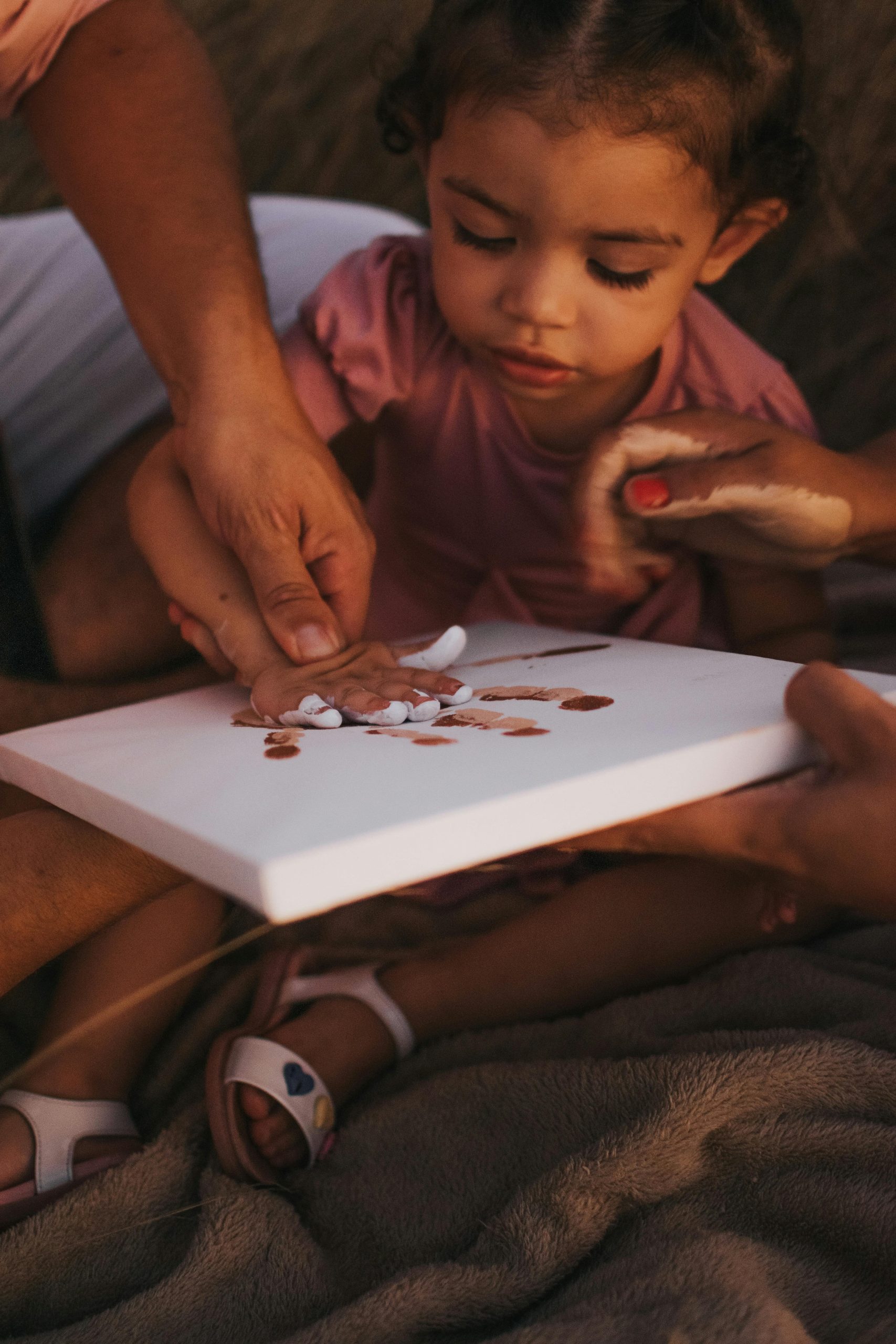Understanding Peer Pressure

Children and teenagers’ behavior and decision-making are shaped by peer pressure, a potent factor. It can take many different forms, ranging from overt verbal advice to deceptive nonverbal clues. The sources, which range from personal friends to social media influencers, are as varied as the pressure itself. Young people’s brains can be influenced by this, and they may adopt behaviors or make decisions that suit their peers—often at the price of their own morals or personal safety.
- Effect: encourages taking chances, modifies moral judgments, and has a big impact on identity development.
- Acknowledgment and Addressing: essential for helping kids navigate its difficulties.
- Parental Position: Give kids the fortitude and self-assurance to stick to their convictions.
Discussing Peer Pressure with Your Child

Identifying the Indices of Peer Influence
Peer pressure has the ability to transform a child’s behavior, interests, or attitudes in before of your very eyes, much like a chameleon. An abrupt fixation on being accepted or fitting in might not be a passing fad. It frequently indicates the presence of peer pressure. In an attempt to gain acceptance from their peers, this influence may cause people to drift apart from their families or close connections.
- Modifications in Behavior: withdrawal and increased time spent alone or with new acquaintances.
- Changes in Mood: abrupt, inexplicable shifts in disposition or attitude.
- Indicators of Compliance: Their burden of conformity is getting to them.
The first step in assisting your youngster in overcoming the difficulties posed by peer pressure is to comprehend its workings. You may assist your child in making decisions that represent who they really are and not simply what their friends think of them by remaining knowledgeable and friendly. It’s about helping kids develop resilience, supportive open communication, and constructive peer relationships.
Getting Ready for the Talk

Selecting the ideal moment and environment is crucial. An honest and open talk takes place in a quiet, private setting that is devoid of outside distractions. Time is just as important. Choose a time when you are both relaxed and unhurried, like on a calm weekend morning or a stroll in the evening.
- Empathy and Transparency: Be sensitive to the subject and create a safe environment for communication.
- Listening: When you listen more than you talk, you may help and understand others.
- Education: Learn about the demands and tendencies of today, particularly in the digital sphere.
It’s critical to educate oneself about the pressures and trends that affect children today. Peer pressure has taken on new dimensions in the digital era, with social media being a major contributor. Learn about the platforms your kids use and the kinds of things they are exposed to. Online resources such as the eSafety Commissioner’s website () offer important insights about children’s digital demands and online safety. You may help your child navigate the complexity of contemporary peer pressure by remaining educated and giving them the skills and self-assurance they need to make informed decisions.
When taken as a whole, these actions set the stage for an insightful discussion regarding peer pressure. They demonstrate to your child that you are a reliable ally while they face the difficulties of growing up, not simply a parent.
Giving Your Child the Tools to Manage Peer Pressure

Developing your child’s confidence and sense of self-worth is a crucial first step. It gives them the inner fortitude to withstand peer pressure. By praising their accomplishments, no matter how minor, and recognizing their special attributes, you help them develop a positive self-image. Their self-assurance serves as a shield, empowering them to make decisions that authentically represent who they are, even when faced with resistance.
- Preparing your youngster through role-playing scenarios and responses can be a fun and interesting method. It’s important to demonstrate for them, not just tell them what to do. They can explore various outcomes, practice saying no in a safe setting, and develop the verbal and nonverbal skills necessary to assert themselves via role-playing. This practical method demystifies the process and lessens the intimidating nature of the real-life application.
- Finding and bolstering a support network is essential. Urge your youngster to associate with peers who honor their morals and decisions. This network offers a safety net and consists of mentors, close friends, and relatives. It gives them the comfort of knowing they’re not alone, establishing a feeling of connection and belonging that can fend off the allure of harmful peer pressure.
- It is crucial to teach students how to think critically and make decisions. It’s about giving your kids the freedom to assess situations, think through the repercussions of their decisions, and make wise decisions. Urge them to consider their options and consider the reasons behind peer pressure. Through introspection, they become more resilient and independent by strengthening their capacity to stand by their choices.
When combined, these tactics provide a thorough plan for empowering your child to resist peer pressure. They not only help your child get ready for these obstacles, but they also provide them the self-assurance and social skills they need to stay loyal to who they are in the face of social complexity.
Helping Your Child Face Difficulties

It takes a careful balance to know when to intervene and when to stay out of the way. It’s about identifying when your child actually needs your help and when they might benefit from handling a situation on their own. They are able to acquire resilience and problem-solving abilities through this discernment, which is crucial for their development.
- Reliability in your assistance and direction gives your child a solid foundation. It gives them confidence that there is a safety net, which promotes trust and honest communication. This constant presence is really important, particularly when kids are feeling pressured to live up to the expectations of their peers. It’s about being present, lending a sympathetic ear, and providing them with thoughtful guidance so they may make choices that are consistent with their moral principles.
- It’s critical to recognize the indicators that your child is struggling beyond what parental assistance can help with. Seeking professional support can give them the tools they need to handle their issues more skillfully, whether it’s an obvious downturn in their mental health, drastic changes in their behavior, or an inability to cope with the pressures they’re encountering. It’s a step that demonstrates to them the value of their wellbeing and that it’s acceptable to seek for assistance.
When combined, these methods create a comprehensive plan for helping your child deal with the difficulties presented by social pressure. You can enable your child to confront obstacles with confidence and make sure they come out stronger and more resilient by recognizing when to offer help, being there for them consistently, and obtaining expert assistance when necessary.
Consolidating the Discussion

Children’s perceptions and comprehension of peer pressure change as they get older. It’s crucial to bring up the subject again on a frequent basis, tailoring the discussion to their maturity and age. This continuous conversation guarantees that kids feel secure and encouraged to talk about any new issues that come up.
- Acknowledging accomplishments is equally crucial as rectifying errors. Recognizing your child for making a choice against peer pressure and in line with their values is important. Small or large, these successes give people more self-assurance to advocate for themselves. On the other hand, errors offer priceless teaching moments. Without passing judgment, talking about what went wrong teaches them how to make better decisions moving forward.
- It is essential to have open channels of communication. Even if your child has made a decision that you disagree with, encourage them to talk to you about their feelings and opinions regarding peer pressure. They will feel more comfortable approaching you with their issues because of the open communication that builds understanding and trust. It’s about providing a secure environment where they feel appreciated and heard.
By going over the discussion again, acknowledging accomplishments, and drawing lessons from errors, you reaffirm how important it is to be authentic. This method builds your bond with your child and lets them realize they’re not the only ones dealing with the difficulties presented by peer pressure, all while assisting them in navigating the complexities of it.
To sum up
Giving kids the tools to resist peer pressure helps them become resilient and self-assured. Despite its challenges, this voyage fosters their growth by instilling wisdom and confidence. Parents can help their children manage social pressures with integrity by having open discussions, role-playing, and encouraging critical thinking. Acknowledging accomplishments and drawing lessons from errors strengthens their resolve to uphold their moral principles. Let’s pledge to be their unwavering ally and support them as they bravely and genuinely embrace their adventure.
How to Talk to Your Child About Peer Pressure FAQs
Being a good role model for your child in dealing with peer pressure involves demonstrating healthy decision-making and assertiveness in your own life. Share stories of how you’ve faced peer pressure and the strategies you used to overcome it. Your behavior and attitudes towards peer pressure can significantly influence how your child responds to similar situations.
You can help your child resist peer pressure by building their self-confidence and teaching them decision-making skills. Encourage them to think independently and to understand the value of saying no when they are uncomfortable with a situation. Role-playing different scenarios can also prepare them to handle peer pressure situations effectively.
Supporting your child in making friends who will be a positive influence involves encouraging them to engage in activities that align with their interests and values. This can help them meet like-minded peers who are more likely to support healthy behaviors and decisions. Additionally, discussing the qualities of good friendships and being involved in your child’s social life can guide them in choosing friends who positively influence them.
Teaching your child to be assertive in the face of peer pressure involves helping them to express their feelings and opinions confidently and respectfully. Practice assertiveness skills with them, such as how to say no firmly but politely, and how to suggest alternatives to activities they’re not comfortable with. This empowers them to stand up for themselves and make choices that align with their values.
Begin the conversation with your child about peer pressure by asking open-ended questions about their friends, what they like to do together, and if they’ve ever felt uncomfortable with something the group wanted to do. This approach encourages your child to share their experiences and feelings, making it easier to discuss the concept of peer pressure and its effects. It’s important to create a safe and non-judgmental space for these discussions.
Signs that your child might be experiencing peer pressure include sudden changes in behavior, appearance, or interests, especially if these changes align with their peer group’s norms. They might also express feelings of stress or anxiety about fitting in or may withdraw from family and longtime friends. Recognizing these signs early can help you support your child in managing peer pressure effectively.
If your child is the one exerting peer pressure on others, it’s important to address this behavior directly by discussing the impact of their actions on their peers. Encourage empathy by asking them how they would feel in the other person’s situation and stress the importance of respect and kindness in friendships. This conversation can help them understand the consequences of their behavior and encourage more positive interactions with their peers.
Peer pressure is the influence exerted by a peer group, encouraging individuals to change their attitudes, values, or behaviors to conform to group norms. It can affect your child by impacting their decision-making process, leading to stress, anxiety, and potentially harmful behaviors. Understanding the dynamics of peer pressure can help you guide your child through navigating their social interactions more confidently.
Friends play a significant role in your child’s experience with peer pressure, as they are often the source of such pressure. Positive friendships can provide support and encouragement for your child to resist unhealthy behaviors, while negative peer influences can lead to risky behaviors. Encouraging your child to choose friends wisely and to be a positive influence within their peer group can help mitigate the effects of peer pressure.
If your child gives in to peer pressure, it’s important to address the situation without judgment or criticism. Discuss the consequences of their actions and explore the reasons behind their decision, focusing on understanding rather than punishment. This can be a learning opportunity to reinforce coping strategies and decision-making skills for future situations.

Jasmine Duque-Love is a mother of one and a practicing physiotherapist with a Phd in Physiotherapy

